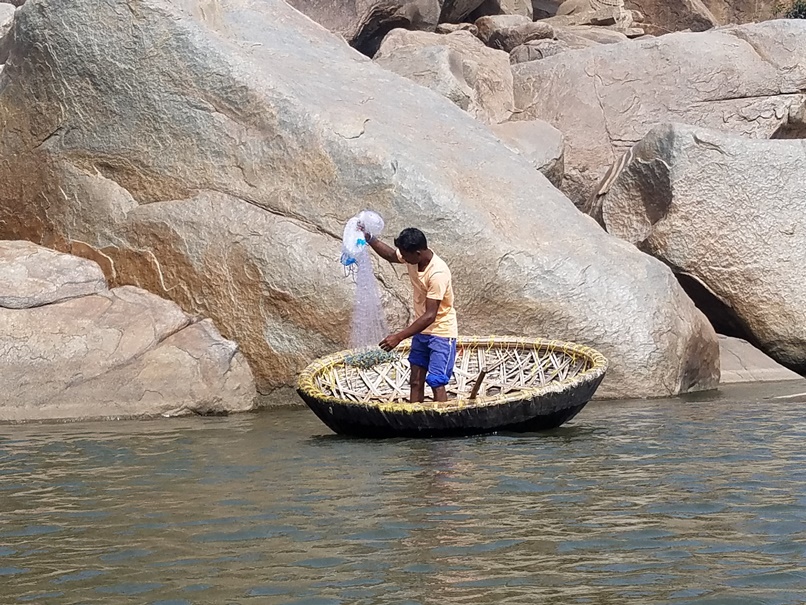Men Of The World – India
From the narrow lanes and the Ghats of Old Varanasi, where holy men sit immersed in meditation on the banks the River Ganges; to Dharamshala where Tibetan monks dressed in ruby-red robes are a common sight in the town of McLeod Ganj; to Rajasthan where men don plaited turbans in a riot of brilliant colors; to the hot steamy south; Indian men are casual and elegant, stately and informal, traditional and contemporary, in their style of dress.

Jaipur-Rajasthan
A turbaned, barefoot dancer twirls to the music of the sitar player. His skirts swirl like a spinning umbrella.
The hotel staff of this Haveli heritage house wears tunics in shades of grey accented by polished, gleaming, silver buttons. The simple elegance of the outfit is crowned by a turban in spiraling strips of red and gold.

Quintessential western dress – jeans, slacks, and tee shirts – mingle in the larger towns and cities with eye-catching, colorful, traditional Rajasthani fashion.
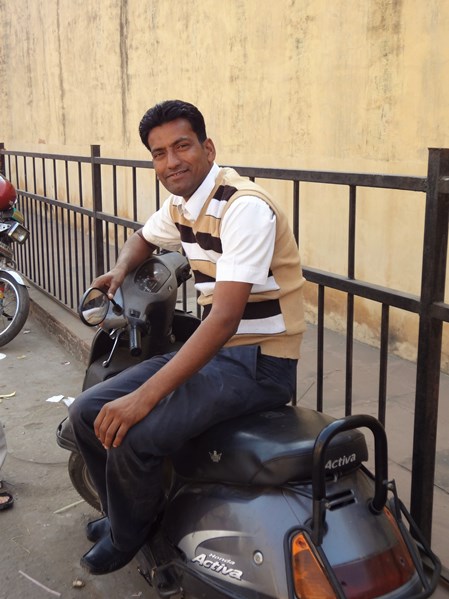
Shahpura- Rajasthan
In the villages of Rajasthan unique, handmade, gondola-style leather shoes with upturned toes are still lovingly crafted by generations of shoemakers. This statuesque gentleman who sports a silver-grey mustache is immaculately dressed in white dhoti, a caramel colored pashmina, gondola-style leather shoes, and a golden turban made of yards of artfully interwoven fabric.
Dhoti are traditional men’s pants made from a long length of unstitched fabric, which is wrapped around the waist and legs, then knotted at the waist. They can be knee length, calf, or ankle length. Today, in the big cities and fashion centers of India, talented young designers have elevated the dhoti to a stylish, trendy, item of clothing.

A priest raises his hand in greeting. He wears a turban that resembles soft swirls of peach sorbet. His cotton wool-like beard cascades down his chest in soft curls.

An elaborate arrangement of lime green fabric encased in cream with black trim frames the lined face of a village elder.

It’s amazing how supple the men are. They can sit in yoga poses and squat on their haunches for hours on end.
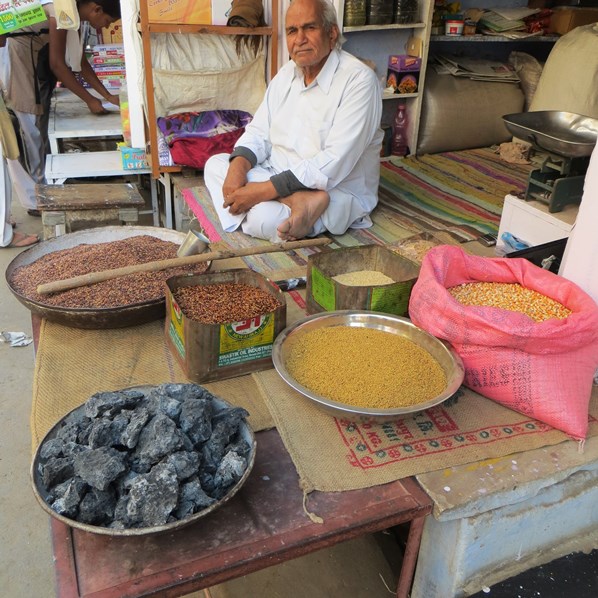
Their knees are knobbly; their spindly legs are as strong and sturdy as weathered sticks; their mustaches are trimmed, sculpted, and waxed; their expressions are both unreadable and captivating.


Aravalli Mountains – Rajasthan
The guards at the Rawla Narlai – the former hunting lodge of the Maharaja of Jodhpur – have the aura of fierce warriors. In reality, they are charming, gentle giants. Their dhoti are hand embroidered in a pattern unique to the area, and heavy medallions hang from their necks.


Jodhpur – The Blue City – Rajasthan
Cell phones are ubiquitous. He looks as though he’s engaged in negotiating an important business deal, while his wife and child stand patiently by.

Dharamshala – Kangra
In the shadows of the Himalayas lies the funky, spiritual town of Dharamshala where the 14th Dalai Lama and many of his followers, took refuge in 1959. The town has an interesting blend of Tibetan monks, Indians, Nepalese, devout Hindu and Buddhists, and Europeans, all of whom have made this mystical, magnetic town – where the mist wraps itself around the towering peaks of the Himalayas – their home.
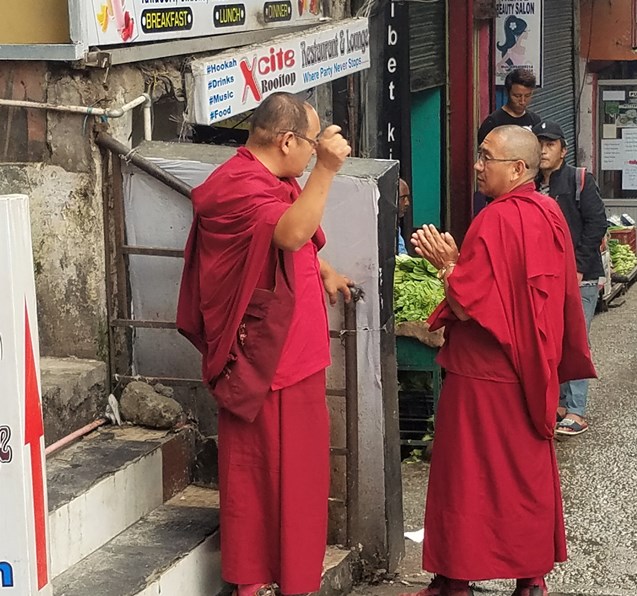

Mysore – Karnataka
In the humming marketplace of Mysore where the aromas of soaps, flowers, and spices fill the air, a vendor tends his stall of homemade, fragrant bricks of soap in a palette of cognac, coffee, honey, and cabernet.

Painstaking work. Flower vendors prepare elaborate hanging arrangements composed of long strands of threaded roses and sweet jasmine, for the upcoming festival of Diwali.

Kozhikode – Northern Kerala
Chanting, bare-chested musicians, lead a procession of men from the temple to the lakeside during a ceremony to honor the Hindu god, Shiva, who is both the god of destruction and restoration.

The Backwaters – Alappuzha – Southern Kerala
Southern India is hot and muggy. In the marketplace on the banks of the river, the men favor loose cotton shirts and short dhoti. The colors are never bland and boring. Their clothing matches the colors of ripe bananas and nectarines.

Drifting along the backwaters in a traditional kettuvallam constructed from wood and honey-colored woven bamboo.
Kumar (the captain of our three crew houseboat) wore a loose, comfortable, sarong and a tee shirt. Sarongs are practical and cool in the tropical climate of Southern Kerala.

Floating downriver, I marveled at the perfection of the water lilies. This gentleman picked two cerise colored long-stem beauties and rowed over to present them to me.

Varanasi – Uttar Pradesh
A holy man at the ghats (riverfront steps) that lead to the revered River Ganges. Ceremonies take place daily at several ghats, while others are used primarily for bathing and purifying oneself, and two are used exclusively as cremation sites.
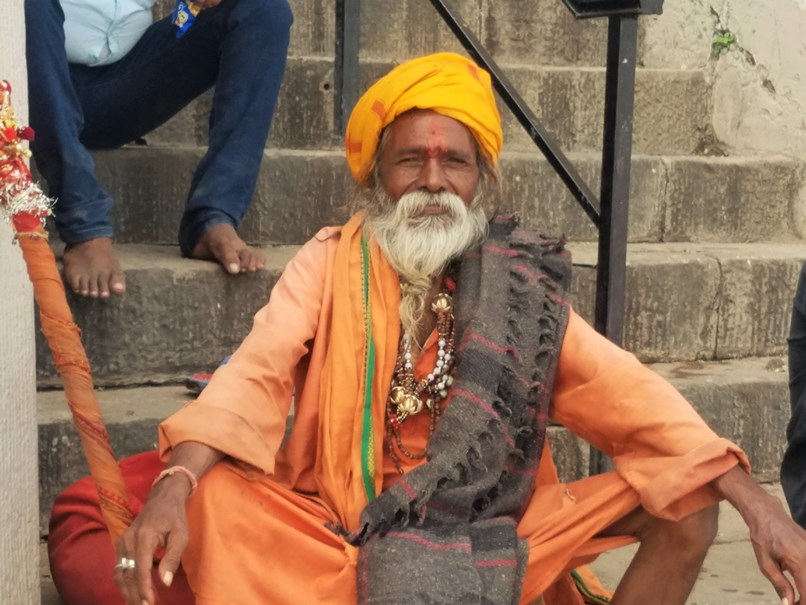
In the narrow pedestrian alleys of Old Varanasi.

Assi Ghat, where a moving ceremony takes place daily at dawn. Worshippers gather before daybreak to pay homage to the river god and sun god who give them life and sustain them.
It’s an unforgettable experience and a deeply spiritual way to start the day.
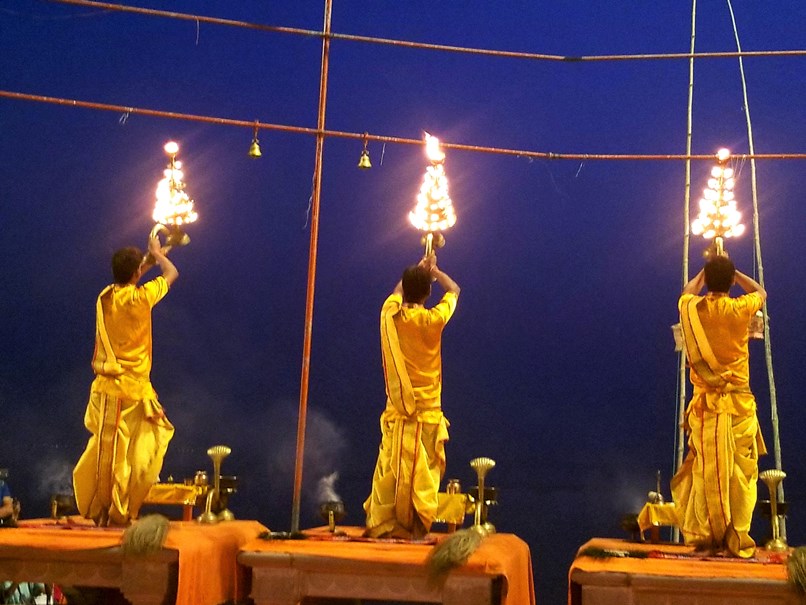
Immersed in mediation at sunrise on the banks of the holy River Ganges.

Mumbai – Maharashtra
Before daylight, newspaper vendors gather on the sidewalks and on the wide deserted boulevards to sort and bind thousands of newspapers. The chai vendor prepares sweet, rich, caramel colored chai. The best I’ve ever tasted.
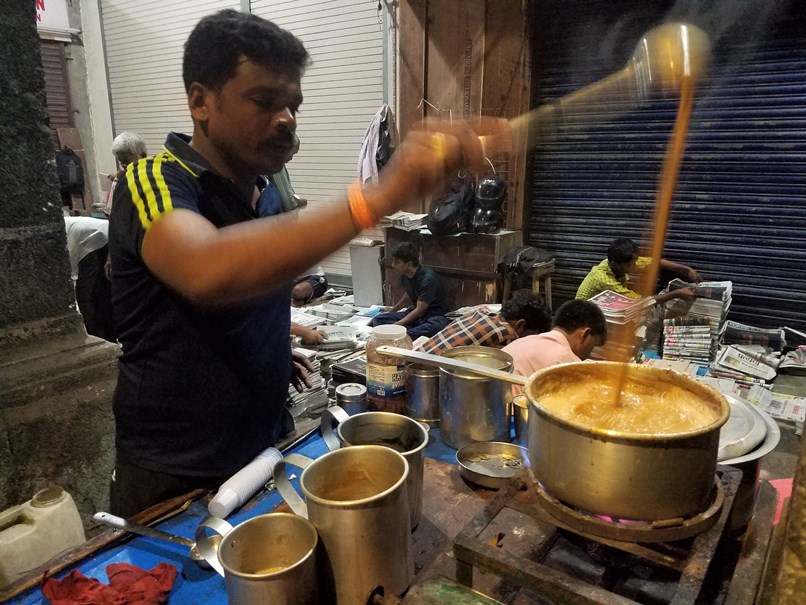
The Mumbai predawn flower market is intoxicating. Countless varieties of flowers, roses, baskets brimming with delicate fragrant petals, garlands of golden marigolds, and exotic leaves, fill the narrow lanes as far as the eye can see. It’s a flower lover’s paradise.

The famous dabbawallahs of Mumbai. Every day, millions of housewives across greater Mumbai prepare lunch for their husbands in their home kitchens. The lunches are packed into cylindrical metal lunch boxes (tiffins) and placed at the front door for collection. By 9:00 am a dabbawallah (lunch box delivery man) stops by the home on his bicycle or cart, and picks up the tiffin, which he delivers to the local station. When the tiffins reach Mumbai, a network of thousands of dabbawallahs – all dressed in white and wearing white upside down boat shaped hats – sort the tiffins into neighborhoods. The tiffins are then loaded onto racks, dollies, or onto bicycles outfitted with hooks in every conceivable spot, and delivered to the recipient’s office by 12:30 p.m.

Delhi
A rickshaw driver in the bustling streets of Old Delhi.

At a restaurant facing the unbeatable orderly chaos of Old Delhi, men squat on their haunches for hours preparing sweet, crispy, jalebi and crunchy nagori and puri.

Hampi – Karnataka
A teenager skillfully maneuvers a woven basket-boat along the river, while a fisherman stands inspecting his nets. It’s no easy feat to paddle a basket-boat without spinning like a top, let alone managing to stand in one.

